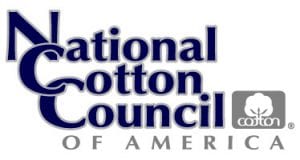 With the goal of helping its members meet their current needs while making the world a better place for future generations, the U.S. cotton industry is setting goals aimed to build upon the strong environmental gains already achieved over the past 30 years.
With the goal of helping its members meet their current needs while making the world a better place for future generations, the U.S. cotton industry is setting goals aimed to build upon the strong environmental gains already achieved over the past 30 years.
“Our industry wants to be the supplier of choice for those who are committed to only buying cotton that is produced with sustainable and responsible environmental, safety and labor practices,” said National Cotton Council Chairman Ronnie Lee, a Georgia cotton producer. “That is the objective that was set by the Council’s COTTON USA Sustainability Task Force.”
Task Force Chairman Ted Schneider, a Louisiana cotton producer, said the actual sustainability resolution that the Council adopted earlier this year called for the creation of the sustainability task force and specified that it collaborates with U.S. cotton industry associations “on developing industrywide goals for measurable continual improvements in environmental stewardship, farm productivity, and resource efficiencies such as land, water, air, input, and energy use.”
Schneider said that among the specific goals being pursued by 2025 are: 1) reducing by 13 percent the amount of land needed to produce a pound of cotton fiber; 2) reducing soil loss by 50 percent, in balance with new soil formation; 3) increasing water use efficiency (more fiber per gallon) by 18 percent; 4) reducing greenhouse gas emissions by 39 percent; 5) increasing soil carbon in fields by 30 percent; and 6) reducing energy to produce seed cotton and ginned lint by 15 percent.
“U.S. cotton growers have achieved significant environmental gains over the past three decades,” explains Schneider. “The goals are meant to continue that trend and to reinvigorate efforts through the setting of realistic targeted reductions.”
Dahlen Hancock, chairman of Cotton Incorporated whose scientists have worked diligently to develop and refine U.S. cotton’s sustainability initiative, said, “We believe the United States may be the only country in the world with these kinds of specific, measurable, quantified goals.”
The Texas cotton producer said the U.S. cotton industry is using science-based metrics and benchmarks developed by Field to Market: The Alliance for Sustainable Agriculture to assess environmental impacts and identify opportunities for improvement. Field to Market works across the entire agricultural supply chain to define, measure and advance the sustainability of U.S. crop production.
Hancock, who is the former chairman of the Council’s export promotions arm, Cotton Council International (CCI), said CCI looks forward to “sharing with U.S. cotton’s global customers the strides our industry will continue to make in providing the world with responsibly produced, quality fiber.”
As the unifying force of the U.S. cotton industry, the Memphis-based National Cotton Council of America has a mission of ensuring the ability of the U.S. cotton industry’s seven segments to compete effectively and profitably in the raw cotton, oilseed and U.S.-manufactured product markets at home and abroad.
From National Cotton Council










